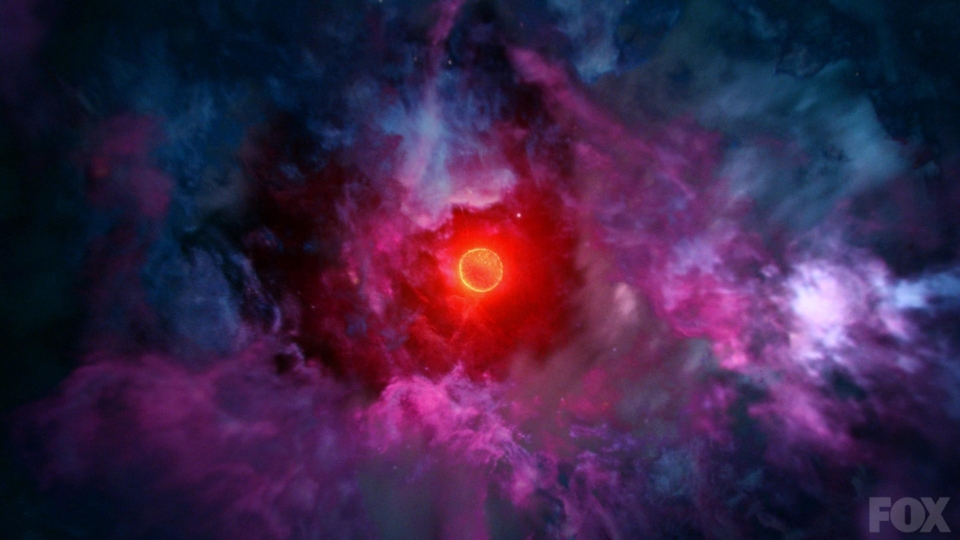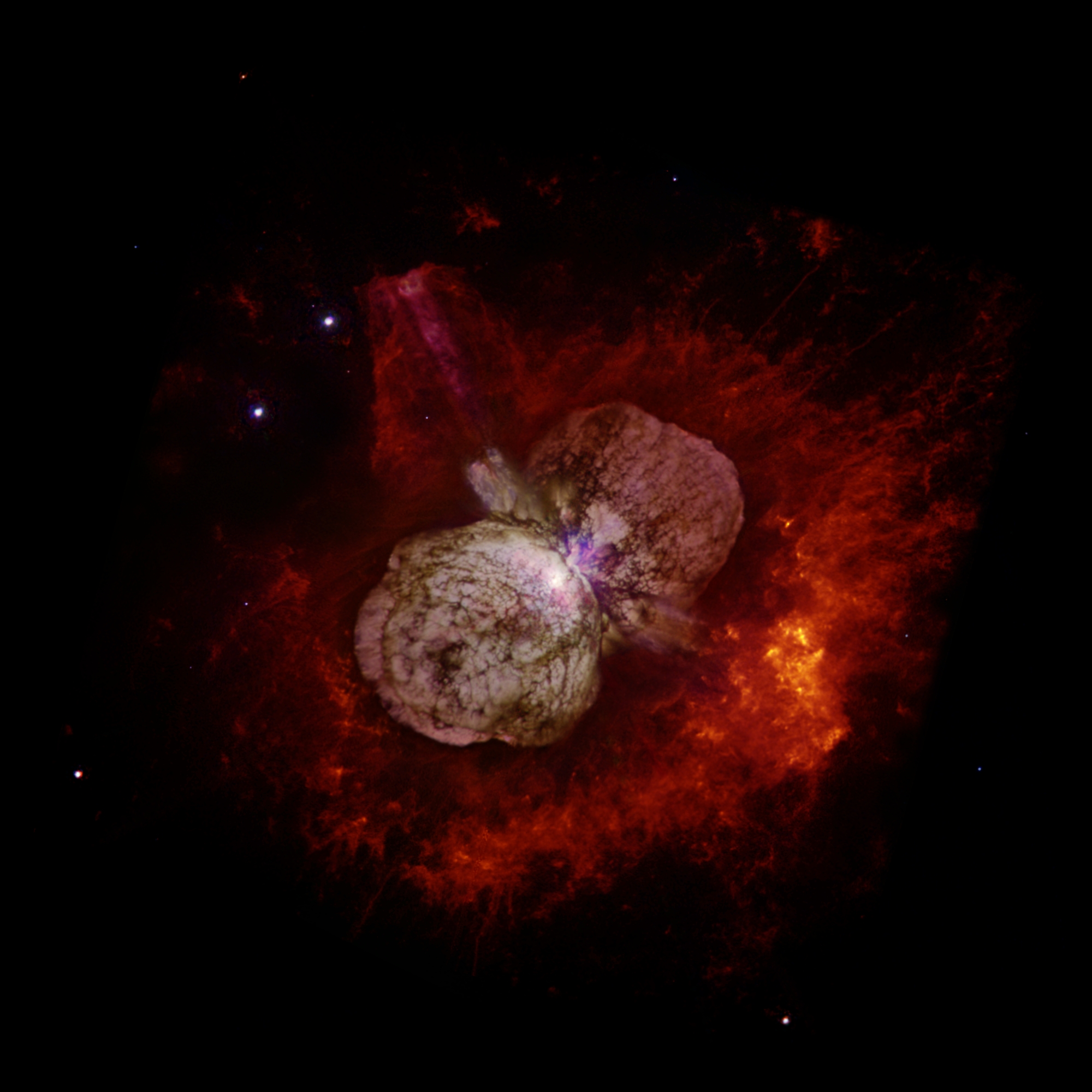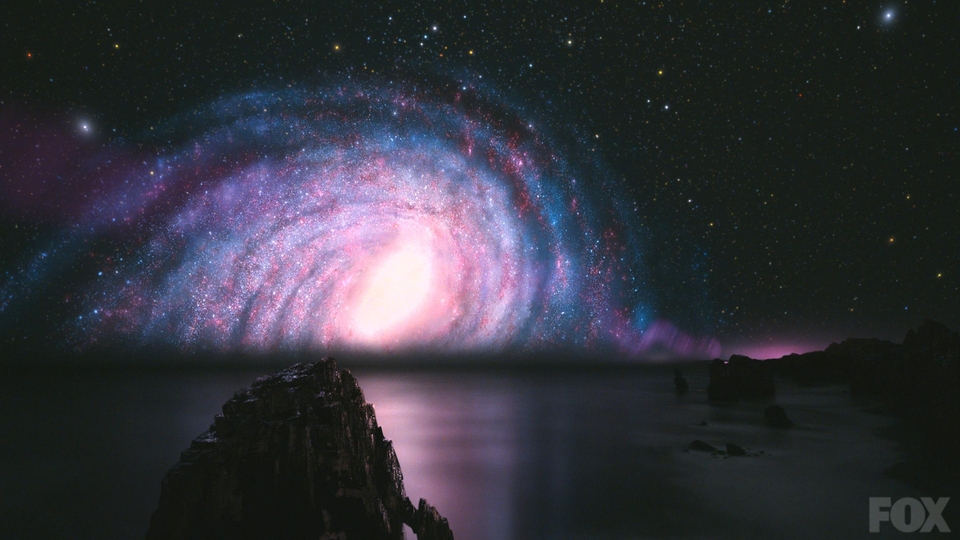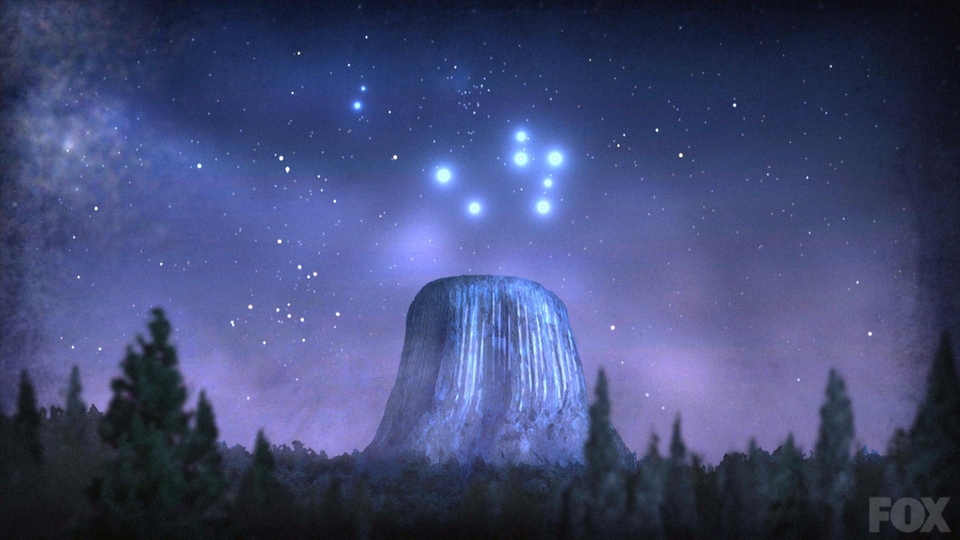 |
| The Carina Nebula is a bustling stellar recycling plant. (cosmosontv.com) |
But let's move on. There was a lot of mind-blowing science in this episode, so let's get started!
Nitpicks
 |
| Eta Carinae is a beautiful physics extravaganza. (cosmosontv.com) |
So, personal interest alert, Eta Carinae is my favorite star, and we're going to talk about it for a bit before I even get to my nitpick. This star is absolutely enormous at over 100 times the mass of the Sun, and used to be even bigger before about 1843 when it apparently shed about 30 solar masses in a gigantic eruption to form the dumbbell-shaped nebula surrounding it. Stars this massive are extremely rare for many reasons, but the most awesome reason is that stars greater than about 120 solar masses exceed the Eddington Limit, which is a physical limit on the amount of light that a star can produce before it literally shines itself apart. That's because light exerts pressure when it shines, which is usually a very tiny amount, but in the case of Eta Carinae there is so much light (about five million times more than the Sun!) that the pressure is strong enough to oppose the gravity of the star and push gas from the surface out into space. Eta Carinae is right at this limit and is therefore very unstable, experiencing fits and coughs periodically and belching enormous quantities of gas out into space.
Stars like this are amazing because they take effects that you can often completely ignore, like the pressure of the photons in your computer screen bouncing off your eyeballs, and exaggerate them millions of time until they are dominating the behavior of a massive star the size of the Earth's orbit around the Sun. Look at this stunning picture of the surrounding nebula created by the 1843 blast, realizing that the cloud is larger than our entire solar system.
 |
| A giant throwing a tantrum. (Wiki) |
"Throwing a tantrum" is a pretty good description of what this star is doing, because it is both violent and extremely young as stars go. The age of Eta Carinae is hard to measure because of its dynamic behavior, but it is believed to be less than a thousand times as old as our Sun, an infant by any measure, and yet it's already in its death throes! Star energy output rises very rapidly with mass, so huge stars put out massive amounts of light and energy very quickly, which must all be replaced by fusion in their cores at an absurd rate. This means that larger stars live fast and die young, rapidly converting their initial hydrogen and helium into heavy elements and spewing some of them back into the galaxy when they run out. Stars this size can sometimes completely destroy themselves, leaving behind no white dwarf, neutron star, or black hole remnant and scattering a dozen or so solar masses of pure iron into the interstellar medium, along with correspondingly massive quantities of other elements. These reckless, boiling factories have seeded the cosmos with the stuff that we are made of for billions of years.
So given that this is the very best star in the galaxy, why am I putting it in my nitpick section? Well, remember when I mentioned that the nebula surrounding Eta Carinae was as big as our solar system? It's actually a few light-months across, and the star itself is several light minutes across. That means that we shouldn't see the inevitable gigantic explosion play out in a few seconds as was shown. Instead, the star would collapse on a timescale of minutes to hours, growing brighter and blowing itself apart in the process. The light would illuminate the huge nebula over the course of several months like a (thermonuclear) flashlight shining into a balloon, which would probably heat up the nebula and begin to accelerate it away from the star before the gas from the explosion reached it. So the animation was probably not very accurate. Additionally, the simulated image of the hypernova twinkling over the Sydney Opera House would probably not be noticeably variable over the time it was shown to us, since it would take at least minutes if not days or months for any change to spread over the entire object (astronomers actually use this to estimate the maximum sizes of various objects that are too far away to see directly: they will notice the time scales involved in its dynamics and then multiply by the speed of light to get an idea of the largest the object could be).
To be honest, no one wants to watch a hypernova play out at actual speed (well, except for me and other astronomy lovers and astronomers, through a telescope every night for as long as it lasts), and Cosmos is certainly forgiven for showing us the dynamic behavior of the object. I just was glad to get a chance to talk about my favorite ball of nuclear fire.
Nods
 |
| Sky envy. (cosmosontv.com) |
This image basically speaks for itself, so I'll just try and fill in some of the context. Orbiting our galaxy are about 150 star cities, called globular clusters. Each consists of hundreds of thousands or millions of stars swarming tightly around one another, bound by their mutual gravity. They can orbit the Milky Way out of the plane of the galaxy, and some are quite distant from us so that a hypothetical observer on a hypothetical planet would actually be able to see the entire disk of our galaxy spread out across a large fraction of their night sky. Perhaps the view would not be so bright to the naked eye, but I'm not one to speculate about alien physiology. From this eagle's nest, the true structure of our galaxy (which is still a bit of a mystery to us, due to our lousy vantage point) would be not only apparent, but would dominate the night sky. Every century or so a supernova would shatter the otherwise serenely and almost imperceptibly rotating spiral disk of our home galaxy. It would be a sight worth the trip.
News
 |
| The seven sisters of the Pleiades. (cosmosontv.com) |
I was interested to learn about the ancient origin myths for the Pleiades (although I can't figure out if the Kiowa people just never moved from wherever they came up with the story or if they just didn't notice or care that they could make the Pleiades appear over the rock formation on any night they were visible if they just walked to the right place...), but even more amazed by the poetry of the fact that Orion's stars will appear to catch up to the Pleiades over the next few million years, only to die in supernovae before he reaches them. Science shows us that the laws of stellar evolution will grant the Seven Sisters the peace that Zeus would not.
I was also glad to learn more about the stories of the women astronomers at Harvard who helped break the gender barrier for female scientists. I had known about Cecilia Payne vaguely from a few courses I took on astronomy here at Caltech, but I had little idea how valuable her contribution to the field was (she basically gave astronomers all of their most powerful tools for learning about the characteristics of stars from their spectra). It is a sad story, not exclusive to women or other underrepresented groups, that the second person to discover something is very often more closely associated with its discovery than the first, however, that is not the only story of Dr. Payne. She went on to observe and catalog over a million stars, and became the first woman to head a department at Harvard. I'll close with some of her own words, looking back on a lifetime of discovery:
"The reward of the young scientist is the emotional thrill of being the first person in the history of the world to see something or to understand something. Nothing can compare with that experience... The reward of the old scientist is the sense of having seen a vague sketch grow into a masterly landscape."
-Cecilia Payne-Gaposchkin
No comments:
Post a Comment